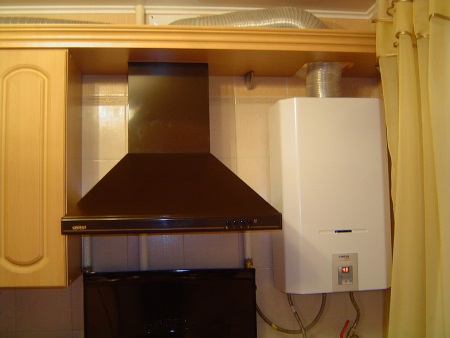Exhaust pipes for gas boilers and features of the exhaust system for gas boilers
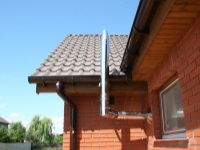
In the installation work associated with the installation of a gas boiler, you need to pay a lot of attention to the removal of combustion products from the operation of such equipment. This is important not only for the safety of the people using the heater, but also for the economical and efficient operation of the appliance.
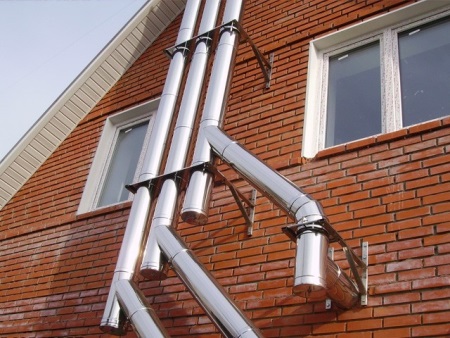
Factors that affect the design of the exhaust system
When selecting a variant to vent the exhaust gases from the heater, you should consider:
- The location where the heater will stand.
- The model of the appliance.
- The required chimney height.
- The required diameter of the exhaust pipes.
- The power of the heater.
- Climatic conditions in which the equipment will operate.
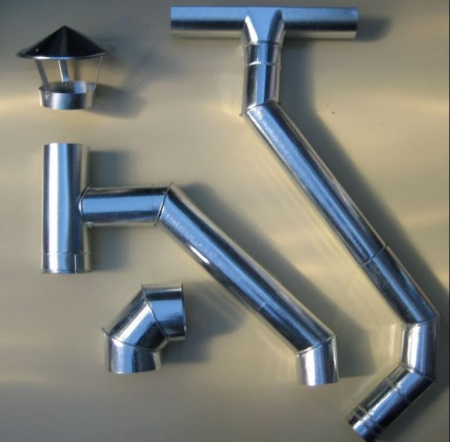
Installing an exhaust system in a private home, it is important to bring the chimney above the roof more than 1 meter.
Types of exhaust pipes
At the present time, the exhaust system for a gas boiler can be installed using:
- Corrugated pipes made of multi-layered thin aluminum. Such pipes are flexible and can change their length.
- Steel pipes. To protect them from corrosion, such pipes are treated with heat-resistant enamel. When installing in a private home, this type of pipe should be insulated.
- Double-circuit pipes. They are a "pipe-in-pipe" construction, with thermal insulation (mineral wool) located between the outer and inner pipe. There is no condensation in such a pipe.
- Coaxial pipes. In their design, the inner tube takes the exhaust gas from the speaker to the street, and between the walls of the outer and inner tube air from the street to the burner. Boilers with this type of exhaust system is called turbine, because the extraction of gases in them is carried out with the help of a fan.
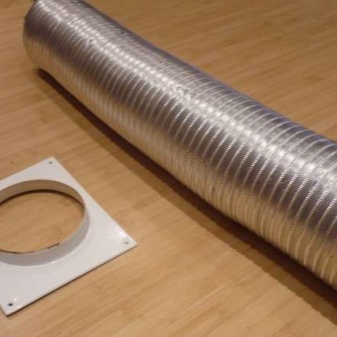

Installation of the exhaust system in a private home
The work should begin from the column, connecting its outlet pipe to the hole in the ventilation duct in the wall. Then the chimney is mounted on the outside wall of the building or inside the house. Sections of the pipes are fixed with brackets. Once the vertical part of the chimney will be installed, mount a cap and leave the revision window. In conclusion, you should perform a check of the draught.
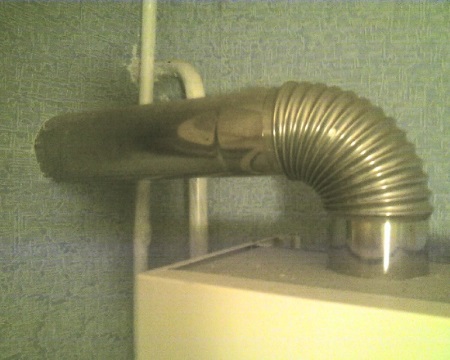
Possible problems with combustion gases venting
Flue gas venting problems can be related to:
- Improper installation of the chimney.
- Poor quality materials.
- Insufficient insulation of the structure.
- Leaky connections.

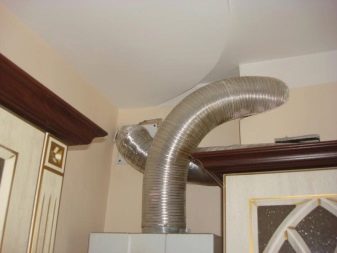
In the following video you can see what mistakes are more often made when choosing chimney pipes and how to choose them correctly.
Additional installation of the hood
Usually for the operation of a column with an open combustion chamber in a city apartment, natural ventilation in the room, which is provided by the presence of a window in the room and not clogged ventilation shaft, is sufficient. In this case, many owners of columns think about additional installation of an extractor in order to increase safety and increase the draft. In fact, if the draft is sufficient, there is no need for such action. On the contrary, the installation of a hood over the speaker can lead to such problems:
- If there is insufficient air flow into the room (for example, if the window is closed), the hood will draw air from the bathroom vent, which will lead to an unpleasant smell in the kitchen.
- If there is one ventilation duct and the room already has a hood over the stove, the additional installation of a hood will create a back draft, which is dangerous to the health of the occupants.
